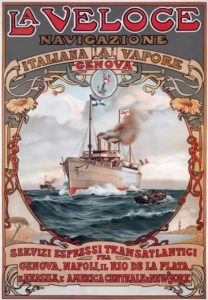Chapter: 7. Enter Ellis Island: The Great Wave from Southern and Eastern Europe
Focus Questions for Chapter 7: Entering Ellis Island
Type your learning objectives here.
- First
- Second
Introduction: The “New Immigrants”
From 1880 to 1924, the largest influx of immigrants entered the United States during the rapid industrialization and urbanization of the Second Industrial Revolution. Most of this group came from new countries in Southern and Eastern Europe. While they often hailed from small towns and villages in Europe, these immigrants found themselves in ethnic ghettos in the Northeast and Midwest cities. This generation of immigrants was called the “new immigrants” throughout the 20th century, marking one of the largest waves of immigration in American history. Questions arose about how these new arrivals, one of the largest non-English-speaking groups of Europeans, would fit into American society, particularly concerning language and religion.
Foreign-born population in the United States
European Immigration during the “Great Wave”

Between 1880 and 1924, the United States experienced the largest influx of immigrants, significantly shaping the nation’s demographic and cultural landscape. This wave of newcomers primarily came from Southern and Eastern Europe, including Italy, and various ethnicities from the Russian Empire, marking a shift from previous immigration patterns. Many of these “new immigrants” settled in urban areas, seeking jobs in rapidly industrializing cities. Approximately 84.4% to 86.6% of these immigrants became urban dwellers, reflecting their integration into the economic fabric of American life.
By 1907, most immigrants departed from four key European ports: Naples, Bremen, Liverpool, and Hamburg. The introduction of steam-powered passenger ships facilitated this migration, making the journey faster and more affordable—typically costing about $10 from Liverpool, which represented roughly ten days’ wages for a common laborer. While some shipping lines offered better conditions, others, particularly those operating out of Italy, France, and Greece, were known for their poor treatment of passengers. This era not only transformed American cities but also highlighted the complexities of immigration as these new arrivals navigated their place within American society.
Southern Europeans
The Italians
Regions of Italy
Focus on Food: New York Pizza via Naples
The Greeks
